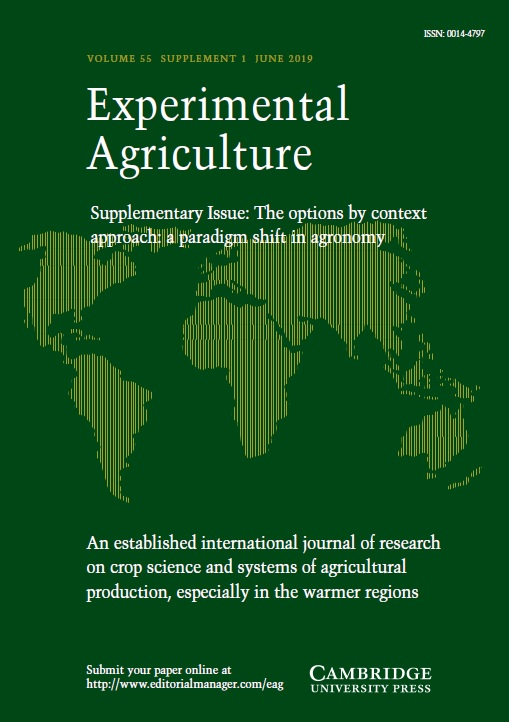Article contents
A Hierarchical Classification of Farm Systems
Published online by Cambridge University Press: 03 April 2017
Summary
A framework is proposed for the classification of farm systems, which are defined as decisionmaking units comprising farm household, cropping and livestock systems that transform land, capital and labour into products for consumption and sale. Two general principles underlying the classification are outlined. First, since farm systems are embedded in a hierarchical structure, the classification is based on the characteristics of the underlying systems and their interactions. Secondly, ecological factors, i.e. physical and biological parameters, are the primary determinants of farm systems. Changes in farm systems, at least in the foreseeable future, depend on the development of socio-economic variables. The classification is summarized in a set of comprehensive tables.
L. O. Fresco y E. Westphal: Una clasificación jerárquica de sistemas agrícolas
Resumen
Se propone un marco para la clasificación de sistemas agrícolas, que se definen como unidades tomadoras de decisiones que comprenden la 'familia' agri'cola, los sistemas de cultivos y ganadero que transforman la tierra, el capital y el trabajo en productos para el consumo y la venta. Se resumen dos principios generates que forman la base de la clasificación: en primer lugar, ya que los sistemas agrícolas se encuentran dentro de una estructura jerárquica, la clasificacion se basa sobre las caracteristicas de los sistemas subyacentes y sus interacciones; en segundo lugar, los factores ecológicos, es decir, parametros fi'sicos y biológicos, son los determinantes primordiales de los sistemas agrícolas. Los cambios en los sistemas agrícolas, por lo menos en el futuro previsible, dependen del desarrollo de variables socioeconómicas. La clasificación se resume en una serie de cuadros amplios.
Information
- Type
- Research Article
- Information
- Copyright
- Copyright © Cambridge University Press 1988
References
- 42
- Cited by

